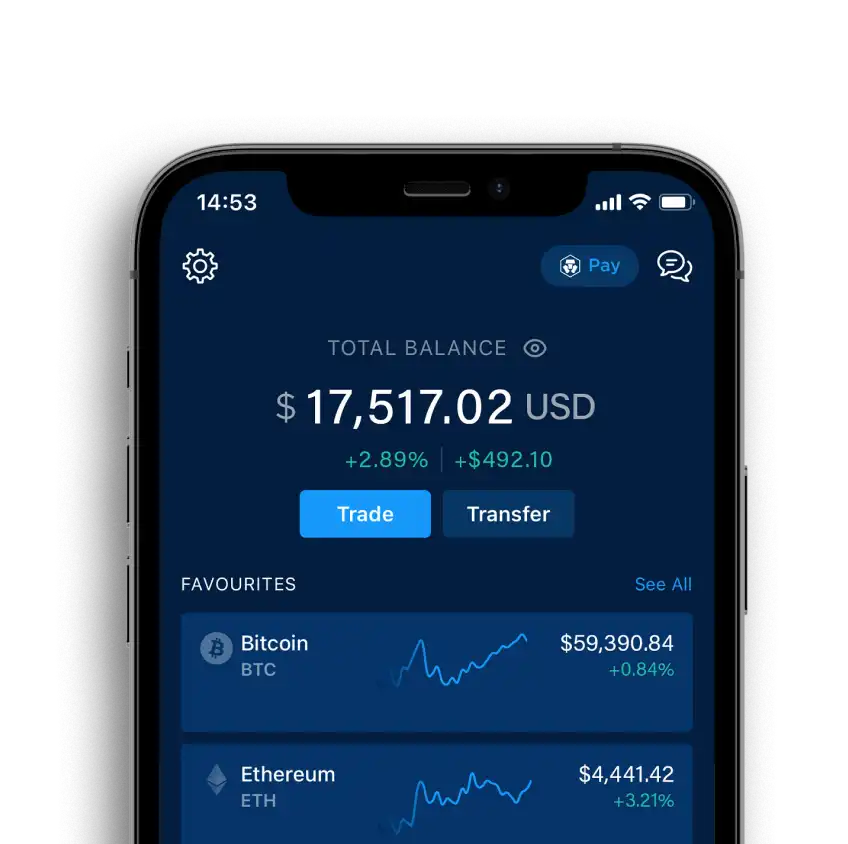
How Do Interest Rates Influence the Cryptocurrency Market?
Learn how interest rates can affect funding flow, risk appetite, and the overall economic dynamics of the cryptocurrency market.

Key Takeaways:
- Lower interest rates make traditional investments less attractive, which can drive some investors towards more volatile assets like cryptocurrencies.
- Changes in interest rates impact the availability of credit, affecting leveraged investments in the cryptocurrency market.
- Cryptocurrencies, particularly Bitcoin, are often viewed as hedges against inflation and currency devaluation during periods of high inflation and low interest rates.
- Central bank policies and interest rate adjustments significantly influence market sentiment and the perceived value of cryptocurrencies.
Introduction
Interest rates are a fundamental aspect of any economy, influencing everything from consumer spending to investment strategies. In the realm of traditional finance (TradFi), the effects of interest rate changes are well-documented and understood, yet many traders still underestimate the effect that rate changes can have on the cryptocurrency market.
This article dives into the relationship between interest rates and the cryptocurrency market, and how rate change can influence crypto prices.
What Are Interest Rates?
Interest rates, essentially the cost of borrowing money, are set by central banks and play a pivotal role in controlling economic activity. The primary mechanism through which central banks, such as the Federal Reserve in the United States, influence the economy is by adjusting the federal funds rate.
This rate affects the interest rates that banks charge each other for overnight loans, which in turn influences the rates consumers pay on loans and savings earnings.
When central banks adjust interest rates, they aim to either stimulate economic growth or cool down an overheated economy. Lowering interest rates makes borrowing cheaper, encouraging businesses and consumers to take out loans and spend more, thereby boosting economic activity. Conversely, raising interest rates makes borrowing more expensive, which can help control inflation by reducing spending.
Find the latest interest rates for the US, Japan, UK and other major countries in our weekly market pulse.
The Connection Between Interest Rates and Cryptocurrency
Although cryptocurrencies operate outside the traditional banking system, they are not completely immune to the effects of interest rate changes. Below are several ways in which interest rates can influence the cryptocurrency market.
1. Fund Flow
Interest rates directly affect the returns that investors can expect from TradFi instruments like bonds, savings accounts, and other interest-bearing assets. When interest rates are low, these investments yield lower returns, making them less attractive. This environment often drives investors to seek higher returns in alternative assets, including cryptocurrencies.
During periods of low interest rates, the opportunity cost of holding non-interest-bearing assets like cryptocurrencies decreases. This can lead to increased investment in cryptocurrencies as investors search for higher yields. Conversely, when interest rates rise, traditional assets become more attractive, potentially leading to a decrease in demand for cryptocurrencies as investors shift their funds back to more stable, interest-bearing investments.
2. Risk Appetite
Interest rate changes can also influence the overall risk appetite of investors. Low interest rates tend to encourage risk-taking behaviour because the returns on safe assets may be insufficient to meet investment goals. This environment can lead traders to allocate more of their portfolios to riskier assets, including cryptocurrencies, in pursuit of higher returns.
On the other hand, when interest rates rise, the increased returns on safer investments can reduce the need for taking on additional risk. As a result, investors might move away from volatile assets like cryptocurrencies and back into more stable, interest-bearing securities.
3. Liquidity and Borrowing Costs
Cryptocurrency markets can also be affected by changes in liquidity and borrowing costs resulting from interest rate adjustments. Lower interest rates generally make it easier and cheaper for traders to borrow money to invest in various assets, including cryptocurrencies.
For example, during periods of low interest rates, traders might take out loans to buy more cryptocurrencies, driving up demand and prices. Conversely, when interest rates rise and borrowing costs increase, the reduced availability of cheap credit can lead to a decrease in leveraged investments in the cryptocurrency market, potentially exerting downward pressure on prices.
4. Inflation and Currency Devaluation
Central banks often adjust interest rates in response to inflationary pressures. When inflation is high, central banks may raise interest rates to cool down the economy and bring inflation under control. Cryptocurrencies, particularly Bitcoin, are often seen as a hedge against inflation and currency devaluation due to their limited supply and decentralised nature.
In an environment of rising inflation and higher interest rates, some traders may turn to cryptocurrencies as a store of value to protect their wealth from the eroding effects of inflation. This increased demand can drive up cryptocurrency prices. However, if higher interest rates successfully curb inflation, the perceived need for an inflation hedge may diminish, potentially reducing demand for cryptocurrencies.
Case Studies and Examples
To better understand how interest rates influence the cryptocurrency market, let’s examine a few historical examples.
The Post-2008 Financial Crisis Low-Interest Rate Environment
Following the 2008 financial crisis, central banks around the world implemented ultra-low interest rates to stimulate economic recovery. During this period, the yield on traditional investments was significantly reduced, leading investors to seek alternative assets for better returns. This environment coincided with the launch and rise of Bitcoin and the broader cryptocurrency market, which attracted considerable attention and investment as a potential high-yield alternative.
The prolonged period of low interest rates contributed to an increased flow of capital into the cryptocurrency market, driving up prices and market capitalisation. Bitcoin’s value surged from less than $1 in 2009 to over $20,000 in late 2017, reflecting the heightened interest in cryptocurrencies during this time.
The Federal Reserve’s Interest Rate Hikes in 2017–2018
In response to a strengthening US economy and rising inflationary pressures, the Federal Reserve began raising interest rates in 2017. This tightening monetary policy marked a shift from the previous low-interest rate environment and had noticeable effects on various asset classes, including cryptocurrencies.
As interest rates increased, traditional investments became more attractive, leading to a shift in investor sentiment. The cryptocurrency market, which had experienced a bull run in 2017, saw a significant correction in 2018: Bitcoin’s price plummeted from its all-time high (ATH) of nearly $20,000 in December 2017 to around $3,200 by December 2018.
This period highlighted how rising interest rates can reduce the appeal of riskier assets like cryptocurrencies.
The COVID-19 Pandemic and Subsequent Monetary Policy
The COVID-19 pandemic prompted unprecedented monetary policy responses from central banks worldwide. To counter the economic impact of the pandemic, central banks slashed interest rates to near-zero levels and implemented massive stimulus measures. This environment of abundant liquidity and low borrowing costs once again fuelled interest in alternative investments, including cryptocurrencies.
Bitcoin and other cryptocurrencies experienced a remarkable rally during the pandemic, with Bitcoin reaching an ATH of over $60,000 in 2021. The combination of low interest rates, increased liquidity, and heightened economic uncertainty potentially drove many traders to seek refuge in digital assets.
Conclusion
The interplay between interest rates and the cryptocurrency market is a complex and multifaceted relationship. While cryptocurrencies operate outside the traditional financial system, they are not entirely insulated from the effects of central bank policies. Changes in interest rates can influence investment flows, risk appetite, liquidity, and inflation expectations, all of which impact the demand for and value of cryptocurrencies.
As the financial landscape continues to evolve, understanding the dynamics between interest rates and cryptocurrencies will be essential for investors, policymakers, and market participants. By staying informed about economic trends and regulatory developments, stakeholders can navigate the uncertainties and opportunities presented by this rapidly changing market.
Due Diligence and Do Your Own Research
All examples listed in this article are for informational purposes only. You should not construe any such information or other material as legal, tax, investment, financial, cybersecurity, or other advice. Nothing contained herein shall constitute a solicitation, recommendation, endorsement, or offer by Crypto.com to invest, buy, or sell any coins, tokens, or other crypto assets. Returns on the buying and selling of crypto assets may be subject to tax, including capital gains tax, in your jurisdiction. Any descriptions of Crypto.com products or features are merely for illustrative purposes and do not constitute an endorsement, invitation, or solicitation.
Past performance is not a guarantee or predictor of future performance. The value of crypto assets can increase or decrease, and you could lose all or a substantial amount of your purchase price. When assessing a crypto asset, it’s essential for you to do your research and due diligence to make the best possible judgement, as any purchases shall be your sole responsibility.
Compartir con amigos
Artículos relacionados
Cryptocurrency Trading Pairs: A Beginner’s Guide

Cryptocurrency Trading Pairs: A Beginner’s Guide

Cryptocurrency Trading Pairs: A Beginner’s Guide

What Are Smart Contracts and Why Are They Important for Ethereum?

What Are Smart Contracts and Why Are They Important for Ethereum?

What Are Smart Contracts and Why Are They Important for Ethereum?

Ethereum Wallets: What Are They and Is One Needed?

Ethereum Wallets: What Are They and Is One Needed?

Ethereum Wallets: What Are They and Is One Needed?

¿Todo listo para comenzar tu viaje por el mundo de las criptomonedas?
Obtén tu guía paso a paso para abriruna cuenta con Crypto.com
Al hacer clic en el botón Enviar, reconoces haber leído el aviso de privacidad de Crypto.com donde explicamos cómo usamos y protegemos tus datos personales.







